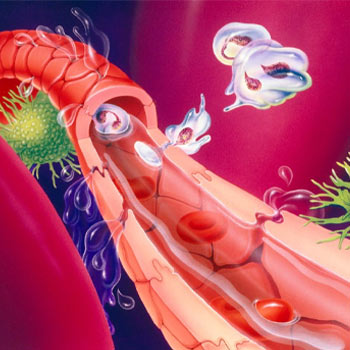Sepsis and Septic Shock
- Home
- Services
- Critical Care Medicine
- Sepsis and Septic Shock
Sepsis and septic shock are critical conditions that can arise from infections, leading to life-threatening situations if not promptly treated. Understanding these conditions, their causes, and the treatment options available is crucial for healthcare professionals and patients alike.
What is Sepsis?
Sepsis is a severe medical condition caused by the body's response to an infection. When an infection occurs, the body's immune system usually responds by releasing chemicals into the bloodstream to fight it. However, in sepsis, this immune response triggers widespread inflammation throughout the body, which can lead to multiple organ dysfunction or failure
What is Septic Shock?
Septic shock is a severe complication of sepsis where blood pressure drops dramatically, leading to insufficient blood flow to vital organs such as the heart, brain, and kidneys. This drop in blood pressure can quickly lead to organ failure and death if not treated promptly and effectively

Symptoms of Sepsis
Early recognition of sepsis symptoms is vital for timely intervention. Common signs include
- Fever or hypothermia
- Increased heart rate
- Rapid breathing
- Confusion or disorientation
- Extreme pain or discomfort
- Clammy skin
- Shortness of breath
Understanding Septic Shock
Septic shock is a severe complication of sepsis where blood pressure drops dramatically, leading to inadequate blood flow to vital organs. This can result in organ failure and death if not treated promptly and aggressively
What kind of treatments available for Sepsis and Septic Shock?
Early Recognition and Diagnosis
Early recognition and diagnosis of sepsis are crucial for initiating prompt treatment. Healthcare providers use various clinical criteria and tests, including blood cultures, imaging studies, and laboratory tests, to diagnose sepsis accurately
Antibiotic Therapy
One of the primary treatments for sepsis is antibiotics. Prompt administration of broad-spectrum antibiotics targets the infectious organisms causing the sepsis. Effective antibiotic therapy not only helps in controlling the infection but also prevents its progression to septic shock
Fluid Resuscitation
Fluid resuscitation plays a vital role in the initial management of sepsis and septic shock. Intravenous fluids help maintain adequate blood flow to organs, improve blood pressure, and support overall cardiovascular function. The type and amount of fluid administered depend on the patient's condition and response to treatment
Vasopressor Therapy
In cases where fluid resuscitation alone is insufficient to maintain blood pressure, vasopressor medications are used. These medications constrict blood vessels, helping to raise blood pressure and improve blood flow to vital organs. Common vasopressors used in septic shock include norepinephrine and dopamine
Source Control
Source control involves identifying and eliminating the source of infection whenever possible. This may include draining abscesses, removing infected tissues or devices, and treating the primary infection site surgically or with other interventions
Supportive Care
Patients with sepsis and septic shock often require intensive supportive care. This may include mechanical ventilation to support breathing, kidney dialysis for kidney failure, and other organ-specific supportive therapies as needed. Close monitoring of vital signs and organ function is essential throughout treatment
Immunomodulatory Therapy
In some cases, especially in severe sepsis or septic shock, immunomodulatory therapies may be considered. These therapies aim to modulate the immune response and reduce inflammation, potentially improving outcomes. However, their use is often guided by current research and clinical guidelines
Prognosis and Follow-Up Care
The prognosis for patients with sepsis and septic shock varies depending on factors such as the underlying cause of infection, the timeliness of treatment initiation, and the patient's overall health. Survivors of sepsis and septic shock may require ongoing medical care and monitoring to manage any lasting effects and prevent future infections
Sepsis and septic shock are serious medical emergencies that require prompt recognition, aggressive treatment, and ongoing supportive care. By understanding the principles of treatment outlined above, healthcare providers can optimize patient outcomes and improve survival rates in these critical conditions.
